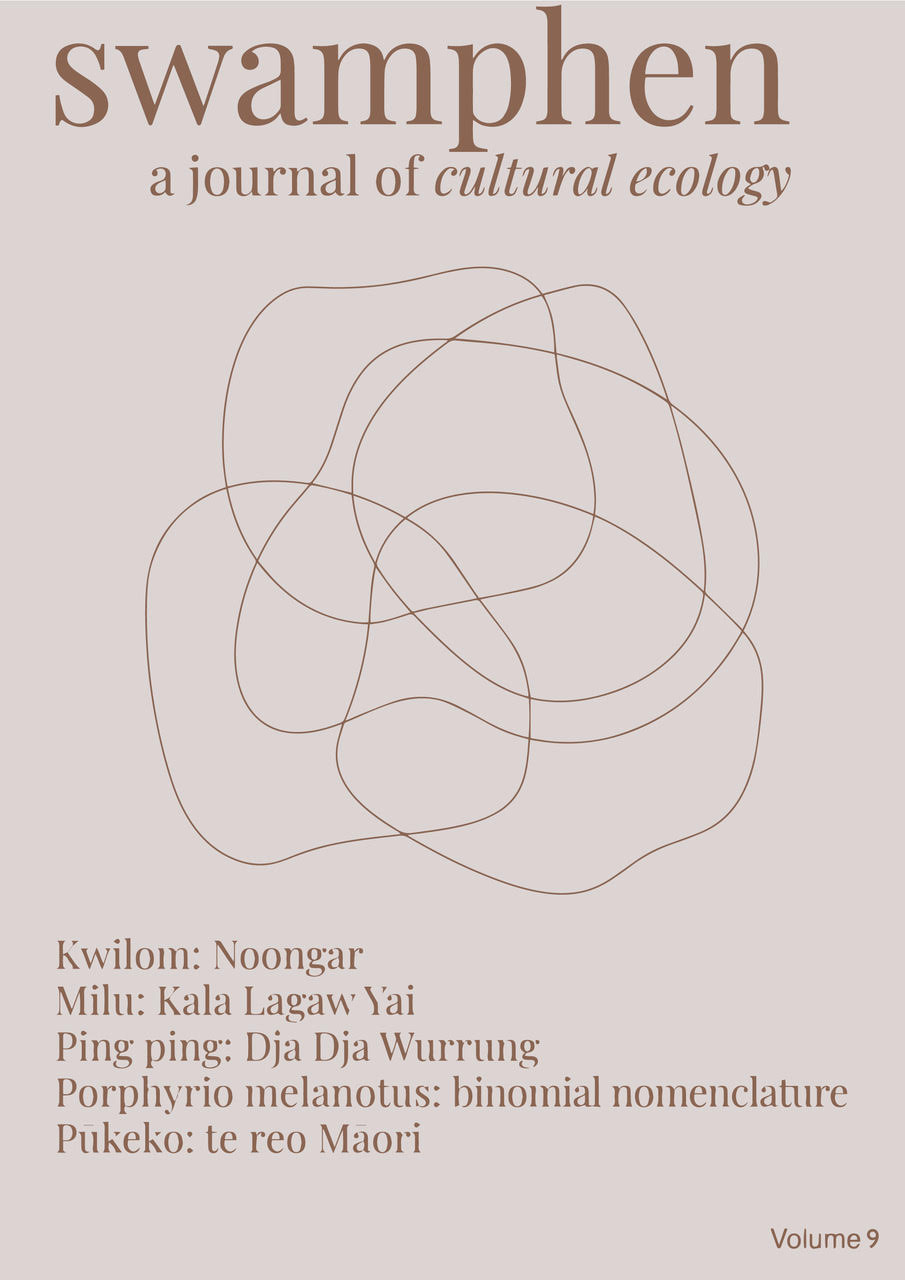A Love Letter to Decorator Crabs
DOI:
https://doi.org/10.60162/swamphen.9.17551Abstract
The ocean is a planetary force consisting of both surface and depth. The imaginary of the ocean is an interconnecting and interconnected force. The ocean, with its hypnotic lack of form, reminds us that who we are does not end at the skin. We bleed into our environments, and our environments bleed into us. The sea is both conceptually and materially entangled with us: we are on a transcorporeal continuum with the ocean. In this love letter, we turn toward the ocean as an ontological space of transformation and extend a dedication to our strange kin: decorator crabs. Decorator crabs are slow nocturnal scavengers. In an attempt to look “less-crab” or “more-than-crab”, they select materials, debris, and other living beings from their environment to adorn their shells, placing them over a velcro-like surface on their carapace: these crustaceans entangle themselves with their environment. In our viewing and interactions with them, we as human researchers similarly entangled ourselves amongst the crabs, all within the potent transformative fluid of the aquarium tank. We present our epistolary dedication to these critters as we conceptualise the aquarium as an alchemist’s pot of entanglements - a metonym for the ocean - to learn and become with the resident crustaceans. The letter is presented in video form here – A love letter to decorator crabs.
Trigger warning: Please be advised that this piece contains descriptions of humans confining and eating other animals.
Downloads
Published
Issue
Section
License
Authors who publish with this journal agree to the following terms:- Authors retain copyright and grant the journal right of first publication with the work simultaneously licensed under a Creative Commons Attribution License that allows others to share the work with an acknowledgement of the work's authorship and initial publication in this journal.
- Authors are able to enter into separate, additional contractual arrangements for the non-exclusive distribution of the journal's published version of the work (e.g., post it to an institutional repository or publish it in a book), with an acknowledgement of its initial publication in this journal.
- Authors are permitted and encouraged to post their work online (e.g., in institutional repositories or on their website) prior to and during the submission process, as it can lead to productive exchanges, as well as earlier and greater citation of published work (See The Effect of Open Access).

